Malva is an amazing and bright flower, which has become a real decoration of many household plots. Every year she pleases with their colorful and colorful blossoms. Flowers of Malva have rather large sizes, so they are considered a bright highlight of each flower beds. And what is the most interesting, despite the fact that Malva is a beautiful and exquisite flower, the care of this plant is pretty simple and for each gardener-gardener. In addition, this plant can still "boast" and its healing properties. Next, we will tell you more about how to grow Malva, as well as about the peculiarities of this flower culture.
Culture characteristics
There are many names of this plant, among them - the moods, Kalachik, rose rose, etc., distinguish more than 30 varieties of Malva. Each of them has its own distinctive features and characteristics. Malva Pink and Malva Forest are considered the most popular types of culture. In addition, several more hybrid varieties of this flower are known.
It is worth saying that Malva is a rather ancient plant, which was grown by the ancient Egyptians and the Greeks. Now this culture is grown with success in Asia, Europe and America. Malva is a very beautiful plant that creative people in their works admired more than once.
One of the oldest representatives of this flower class is Malva Forest. It is a plant whose height varies from 30 to 110 cm. Leaves usually have a heart-shaped rounded form. Flowering culture continues almost all summer.
Flowers Malva are large enough and can reach in diameter up to 13 cm. There are views that form solid brushes. Depending on the variety of the plant, the painting of its flowers is changing. So, there are both white varieties and bordees, and even black.
Petals have an oblong shape. The root system is sufficiently massive. Malva's fruits are a multi-eyed. It should also be noted such qualities of culture as unpretentiousness in leaving, resistance to drought and low temperatures.
Varieties of culture
In the family of Malv, there are only a few species of ornamental plants. Some of them are annuals, and the other - perennials. It should be said that not all gardeners-gardeners consider these plants relating to the family of Malv. So, for example, to another class include Hibiscus, Sudanese Malva and Malva Wrinkling.
Malva One-yeary. Despite the name, this plant is twilight. However, despite the possibilities of this culture, it is grown with us as annual. Hence the name of this variety. This species can grow in a height of up to 1.2 m. For the flowers of this Malva, the presence of dark strips on the petals. The popular variety of this species is Malva Zebrina, which is distinguished by massive pink flowers with dark red stripes. It is still quite known for the "Black Pearl". These plants are decorated with velvet purple flowers, a diameter of up to 70 mm with black stripes.
Malwa Perennial. To this species, in particular, the Malva Muskus variety, plants of which reach a height of more than 1 m. The flowers of this variety are very fragrant have a white or pink shade. The diameter of each flower is from 30 to 50 mm. Sometimes this variety is also called Muscat Muskal.
Famous perennial varieties are:
- White tower and pink tower whose height can reach 700 mm. Their flowering continues until the onset of frosts.
- It should also be noted the Malva Sudanese, which is also called Hibiscus or Sudanese Rose. This is a two-year plant, which is mainly grown for the sake of fruits, which have long been actively used as ingredients for fruit drinks. By the way, these drinks possess therapeutic properties. Known tree and shrub shape of this plant.
- For many years of varieties still belongs to Malva wrinkled, which is also called stock-rose. Solden Malva and Malva, growing in nature, differ in height. So, in a wild form, the plant can grow high to 180 cm, and garden species grow to height no more than 0.9 m. Yellow flowers of this plant in diameter can reach up to 30 mm.
- Among the Garden varieties of Malva, flowers are simple and "terry". The latter have some similarities with peonies. An example of a grade of Mahore Malva can be called the view of Cater's Double Strein, the flowers of which are quite large and have different color. Different varieties of culture have different sizes. So, for example, the Powder Puffs Mixed grade is able to give a stalk high to 180 cm, while Majorette Mixed varieties will not be able to grow at a height of more than 0.75 m.
Malva Hybrid. This is a long-term culture with large stems. In height can reach up to 180 cm. It blooms from the beginning of summer and before the beginning of autumn. Large flowers have a white or gentle pink shade.
How to grow Malva
To date, Malva is grown by sowing seeds into an open ground or seedy. For the reproduction of "terry" types, cuttings are sometimes used. If you think how to grow Malva from seeds, then first acquire suitable seeds in a flower shop. To plant a culture in an open soil in summer, to purchase and prepare seeds will need in spring. Yes, and the plot under Sowing Malva must prepare in advance. The main work on the preparation of the soil is the pumping of the Earth and the bait fertilizers.
The soil on the plot may not fit for landing. So, for example, it can be heavy or immense. In this case, the situation will improve the deposit in the soil of sand.
Many under seeds do special wells in the soil, although it is absolutely optional. It is enough to put the seeds on the surface with a step of 500-600 mm, and then neatly sprinkle with soil. First results, with such a landing, you can already wait in a couple of weeks. It is recommended to be filled with a layer of peat on top of the earth, and in the fall further to cover the plast of fallen leaves.
If Malva is multiplied by a repentance, then seedlings are pre-grown at home or in a greenhouse. This is usually done in April or May. To flowers began to bloom before, seeds for seedlings are planted in March. Only then plants should be equipped with additional lighting, as it will not be enough for themselves. For the seedlings, it is best to use tanks with a mixture of peat and humus. As for the method of reproduction with cuttings, it, as mentioned above, is suitable for "terry" species of culture.
Growing Malva from seeds
If the seeds are planted in spring or in June directly into the soil, then in the first year until the winter, only a small sprout will have time. The plant will bloom in the second year. If you want to get flowers already in the first year, then seeds in the greenhouse stand in the middle of winter. In general, culture grown in this way is stronger than that that is grown from seeds. So, annual varieties are usually sowing in January, and multi-family - only in April. In the first case, the plant is planted in May, and in the second - only in the last summer month or at the beginning of autumn.
If the seeds were stored for about a year or were bought in advance, then before planting, they should be soaked for several hours in warm water. It is necessary so that the solid shell becomes softer and thereby facilitate their germination. It must be said that the seeds of mallows that have prevailed for about three years, germinate better than those that were stored from 1 to 2 years. It is recommended to plant them in a pot with peat. So that the seeds are better germinated, it is desirable to maintain the temperature at the level of + 19 ... + 23 degrees. Under such conditions, shoots should appear after a couple of weeks.
If Malva sowed into the container, then after the first three leaves appear, it will be necessary to break them so that there is at least 20-30 mm between the sprouts. Remote sprouts can be saved by picking in peat pots. When seedling will have time to grow and grow hard, it should be hardening.
Growing and landing Malva
Despite the selected planting method, it is recommended to choose the right area for this. Consider, the colors do not need a transplant, because it can damage their well-developed roots. On the plot prepared for the landing of Malva, the sunshine should be good, as the culture "does not like" shaded places. In addition, it is desirable to protect future sprouts from wind and drafts.
The soil on the site should be sufficiently loose, drained and nutritious. At the same time, it is impossible to forget that plants require timely watering and care. Of course, you can land this culture in a half, but in this case it will not be so bright and high. In addition, the landing place should be located on the elevation, so that the root system of culture does not start due to the stagnation of moisture in the ground. An additional advantage for the site will be protected from drafts and winds. If the soil does not meet the specified requirements, it will be necessary to remove it using the mulching of the site by humus.
An annual seedlings are in the soil usually in the late spring. Perennial grades are planted, as a rule, at the very beginning of autumn. And in the open soil we are transplanted usually in the middle of spring. For this, there are holes up to 30 mm in the ground. In each such hole, several seeds are laid. The distance between the pits should be 40 cm. Then the wells fall asleep the earth and moisturize. To protect the bed from cold air in summer, you can bite it with a fabric material. With favorable weather conditions, shoots should proceed after a couple of weeks. When several leaflets appear in the sprouts, they should be switted so that in the hole remains one seedlings.
Care rules
Little to know how to grow Malva, it is also important to carefully care for the plant. Although, Malva can be called an undemanding culture. Nevertheless, watering and fertilizers will be useful and must be executed in a timely manner. With favorable weather conditions, it is enough to pour flowers only once a week. But during drought it is necessary to increase the frequency of irrigation. It should not be allowed to be in the soil water.
Fertilizers are recommended to use phosphorus-potash feeding in a weak dosage. You need to make it no more than 2 times a month. In addition, sometimes it is worth loosen the soil at the place of bait. This will help improve the intake of fresh air to the root system. But it should be very careful not to damage the roots. Seed collection spend around July. These seeds will be useful for landing the following spring. In addition, it is impossible to forget about the preparation of plants to the winter period. To do this, the plot with Malv's attacks is enough to cover false foliage.
This culture may be affected by some ailments. So, for example, mosaic or pulse dew. For this reason, you should not grow Malva on a plot on which garden crops have already been amazed by these diseases, within 2-3 years. In addition, dark rust spots may appear on the plants. If this happened, the use of fungicides or removal of patients with leaves can help.
Subtlety of land decor
Malva is well suited for flower decoration. Bright flowers along fences and walls of buildings will look good. In addition, Malva can be used to close the appearance of some unbelievous structure. Especially good, these flowers look, being planted groups. One of the most attractive species of Malva is the zebrin variety. Putting on its plot of Malva, you will create a flowerub, which will be bright throughout the summer. If necessary, this culture can be used for drugs.

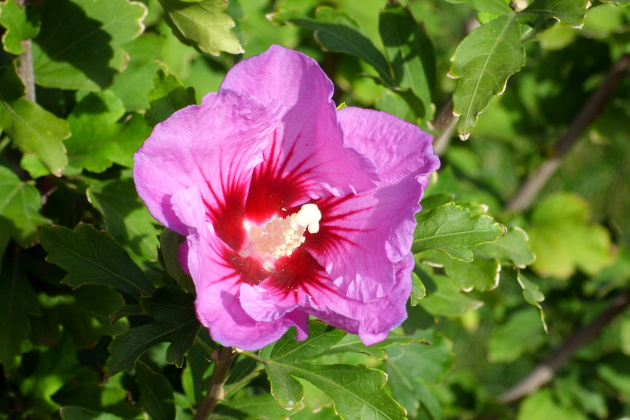
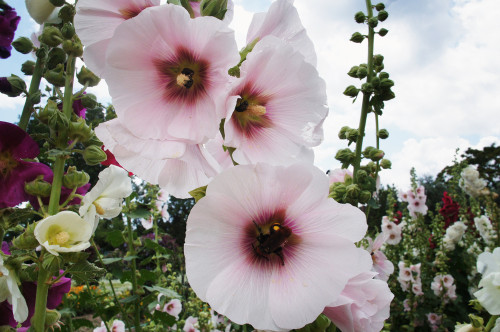
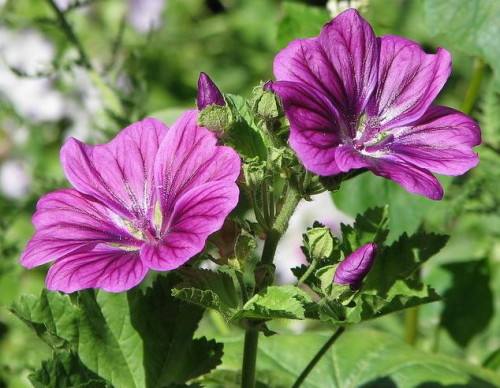

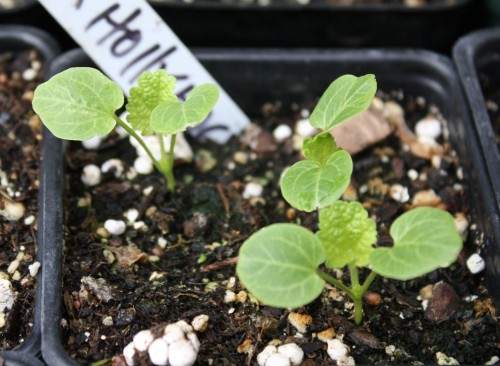
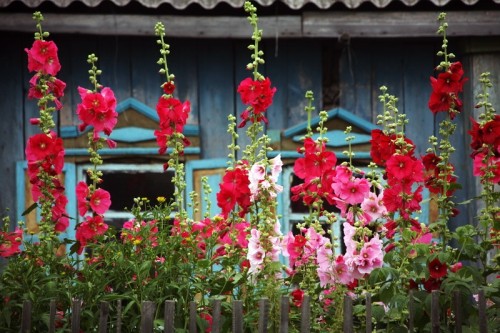
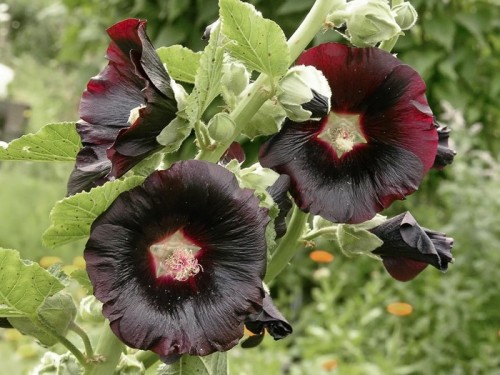
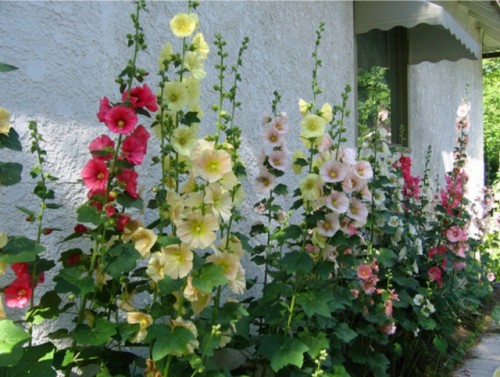
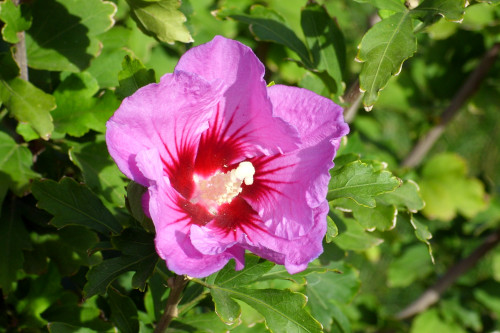












 Start a discussion ...
Start a discussion ...